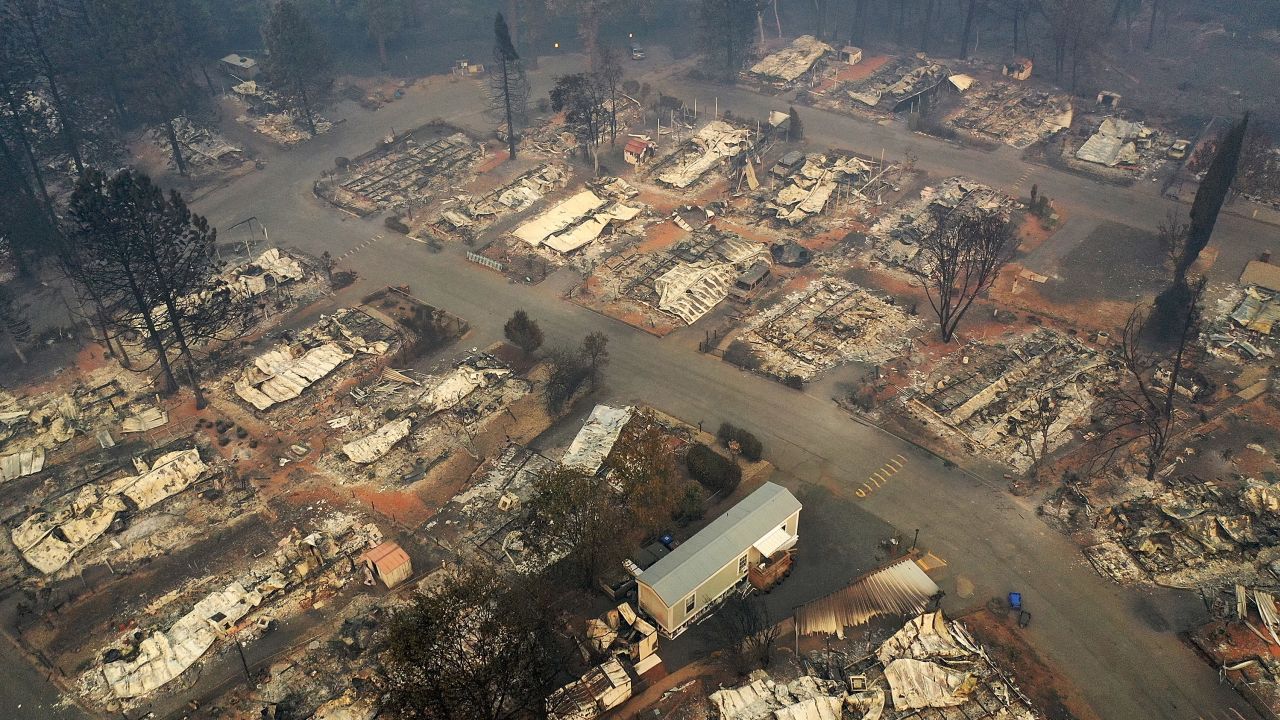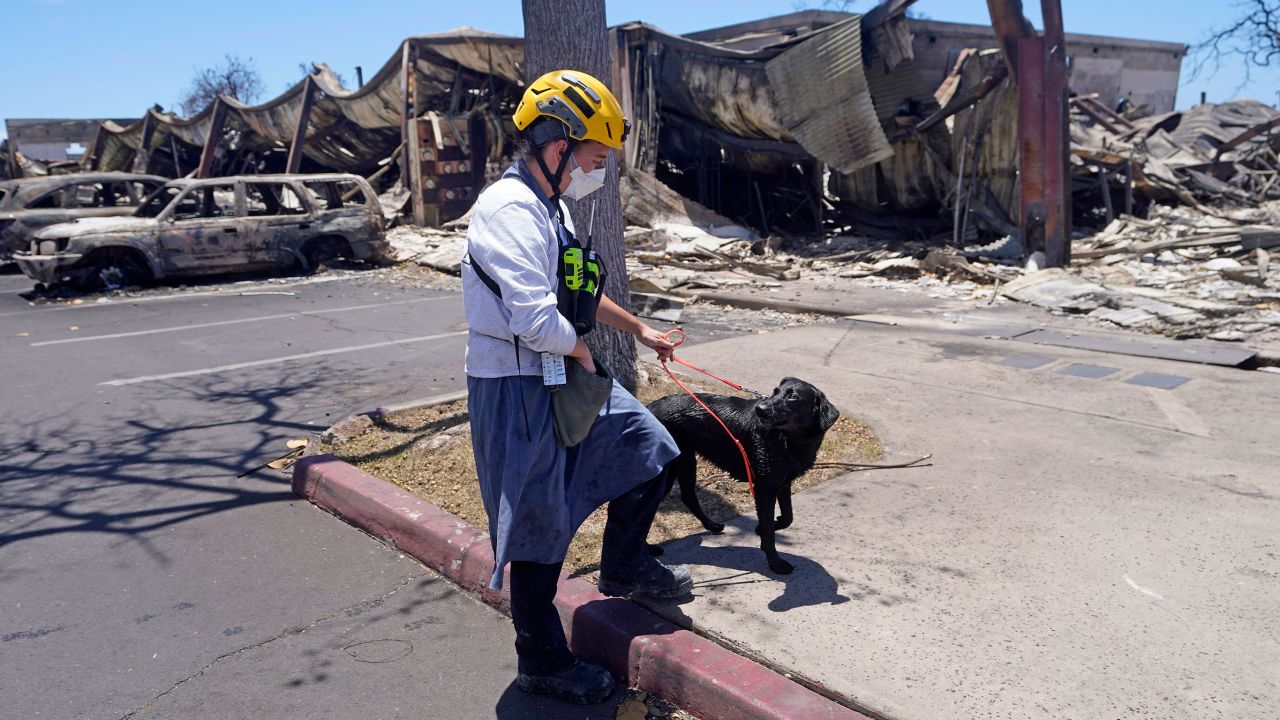CNN
—
The flames took so much in Lahaina.
More than 2,200 homes and businesses – structures reduced to ashen piles in the angular plots on which they once stood; family cars and work vehicles, now hollowed out metallic shells packed in the streets; even boats that were caught in the storm of embers.
And the people who visited and lived in this thriving, historic community: More than 100 lives lost to the deadliest disaster in Hawaii’s state history, and the deadliest wildfire in the US in over 100 years.
A fire with so much loss and destruction shouldn’t have precedent, but recent history has proven otherwise. Just five years ago in California, on a wind-whipped November morning, toppled electrical lines sparked the beginnings of what was the deadliest wildfire in modern US history before Lahaina: the Camp Fire.
Flames ripped down the hills into Paradise, an isolated foothill community, as people scrambled to escape the fire with few ways out of town. And like Lahaina, little was left in the ashes and many lives were lost: 85 killed, 95% of Paradise destroyed, some 18,800 homes and businesses lost in California’s most destructive and deadly fire to this day.
In pictures: The deadly Maui wildfires
Even though these communities and wildfires have key differences, the events that unfolded before, during and after share chilling similarities, highlighting the risk of not preparing for the most intense wildfires.
“I wish I was surprised, but I’m not surprised, and I think it will happen again,” said Mike Robinson, a research professor at Old Dominion University who focuses on emergency evacuations. “Other western states are still denying the problem in many cases, not at the state level, but at the community level, people are denying the problem.”
Human-caused climate change and environmental issues primed these vulnerable locations for a devastating fire long before the first flame. All it took was the right recipe of weather conditions and a spark to set things in motion.
On Maui, drought-parched and fire-prone nonnative plants and grasses – which now cover a quarter of Hawaii – were perfect tinder. The flames were fanned by winds gusting over 60 mph, made hotter and drier as they came down over the nearby mountain and funneled into Lahaina at its base.
Paradise was also in a precarious location. The town is nestled in woodland foothills at the base of the Sierra Nevada. Hot, dry winds gusting up to 50 mph shot down through Jarbo Gap on November 8, 2018, flinging embers great distances into drought-parched trees and brush.
It was incredibly dry there, too. Only 0.25 inches of rain had fallen across Northern California in the more than seven months prior to the fire, according to a report from CalFire.
Droughts are becoming more common and more intense in both states because of the human-caused climate crisis, according to the 2018 National Climate Assessment. Fires are burning 400% more land in Hawaii than a century ago, according to the Pacific Fire Exchange. And that trend will continue, especially in California where wildfires are projected to burn 77% more land by 2100 if planet-warming emissions continue, according to the state’s fourth climate change assessment.
Policy and emergency planning decisions before the fires could have left Lahaina more vulnerable to an extreme fire.
Contradictory state and local reports downplayed the risk of wildfires for Hawaii and Maui while also acknowledging the growing problem they posed, CNN found.
One state report described the risk to people from wildfires as “low.” Another report acknowledged the unique threat posed by fires driven by intense winds enhanced by a hurricane, as was the case with the Lahaina fire and wildfires driven by Hurricane Lane in 2019.
A Maui County report from 2021 said the funds to prevent and fight wildfires there were “inadequate,” and the fire department’s plan did not include anything about how to prevent fires from starting in the first place.
Paradise, on the other hand, treated fire like it was inevitable. They held drills. They had an evacuation plan. But they didn’t prepare for something as extreme as the Camp Fire – one that could force the entire town to evacuate, an “after action” report by a third-party emergency planning consulting firm found.
“Because of exposure to many past disasters, the Town of Paradise may have underestimated the speed at which a fire could spread,” the report states, adding that the fire’s speed caused “officials to question the legitimacy of a town-wide evacuation order.”
A draft Butte County Climate Change Vulnerability Assessment following a destructive 2008 fire also warned of “an increase in frequency and intensity of wildfires” and the threat they posed to places like Paradise, which abutted fire prone wildland.
But subsequent fire plans didn’t take into account the most extreme fire scenario, the after-action report said.
So when the worst-case scenario did happen, evacuation routes clogged, emergency responders became overwhelmed and a town burned to the ground.
As the fire raged toward Lahaina, the winds and flames knocked down cell towers and power lines, cutting off 911 service. Maui’s famed outdoor sirens didn’t sound.
Officials sent out mobile and TV alerts, but many in Lahaina said they didn’t receive them.
“The telecommunications were destroyed very rapidly” Hawaii Gov. Josh Green said, meaning that the tight-knit community was unable to alert one another by phone, as they typically do when there is an emergency. “That communication was cut off,” the governor said.

The result was what many survivors described as an insufficient, haphazard warning. Word of mouth became the only option.
“What we experienced was such a fast-moving fire through the neighborhood that the initial neighborhood that caught fire, they were basically self-evacuating with fairly little notice,” Maui County Fire Chief Brad Ventura told CNN.
An eerily similar story played out in Paradise when the Camp Fire reached the town.
“We didn’t have any warning,” former Paradise resident David Harris told CNN. “I think that’s another similarity – the Maui folks didn’t have any warning. It came on so fast.”
Harris and his wife, Pam, lost everything in the Camp Fire and have since moved to New York.
“The sky was getting really black from all the smoke, we could smell the smoke, we could hear the propane tanks exploding, but there was no warning,” Pam Harris said. “There was no warning signal, we didn’t get a phone call, no police activity, nothing.”

The “after action” report on the Camp Fire found that evacuation alerts were sent out after the fire had already arrived. Many people didn’t receive the alerts because they hadn’t signed up ahead of time and “flames consumed the communications connections of many of the cellular towers that serviced the area, causing massive network and systems failures,” the report said.
With no modern way to communicate the threat, people and emergency responders were forced to go “door-to-door” to get people out. For some it was safer to shelter in place while the fire burned everything to the ground around them.
For others, that proved fatal. Most of the fire’s victims died in and around their homes, a Butte County District Attorney report showed.

By the time the smoke and flames arrived in Lahaina, it was already too late to escape. The fire was moving too fast, downed power lines and road closures impeded the few roads in and out of town, which became clogged with people fleeing the flames.
The fire was moving so fast it “traveled one mile every minute,” Green said in a video statement.
Many people, out of options, jumped into the Pacific Ocean to escape and were rescued by the US Coast Guard. Others didn’t make it. Most of the bodies found in the initial sweep of Lahaina were found in cars, on streets or in other places out in the open, Green said.
“It happened so fast,” Lahaina resident Claire Kent told CNN. “I heard the first explosions of the gas stations exploding and then I saw the black smoke a couple streets away and within half an hour we were out the door.”
The Paradise fire burned through a football field every 3 seconds. A “blizzard of embers” kicked up and carried by winds scaled canyons and started spot fires over a mile away, a CalFire fire chief and report said.
It took less than an hour for the fire to travel seven miles, burn through two mountain towns and reach Paradise, the Butte County District Attorney report found.
As the fire burned on the town’s edge, a frantic evacuation of the entire town was underway. There were only a handful of roads south out of Paradise, which quickly became clogged and overwhelmed with evacuees.
Paradise residents Pam and David Harris told CNN that it took 2.5 hours to travel the 10 miles down the hill and out of town. Houses burned on the roadside as they drove past.
“This black thing behind us was gaining on us,” David Harris told CNN. “It was just like terrifying. Pam and I both ended up with PTSD from the trauma of trying to escape.”
Search teams with cadaver dogs are still combing through burned-out structures in Lahaina, searching for remains that in many cases are unrecognizable because of the fire’s intensity.
“When we find our family and our friends, the remains we’re finding is through a fire that melted metal,” Maui Police Chief John Pelleteir said in a Sunday news conference. “We have to do rapid DNA to identify them.
Some of the dead have only just started to be identified, a process the governor said could take “several weeks.”
The Lahaina fire is another example of how difficult it is to identify the dead from partial remains – a long, tedious and sometimes uncertain process. The Camp Fire proved that process can last well over a year.

In February 2019, more than a year after the Camp Fire first started, the death toll was revised from 86 to 85 because remains thought to be from two people were identified as one: 74-year-old Robert Quinn.
In a grim press release, the Butte County Sheriff’s Department detailed how a piece of bone found with Quinn’s remains seemed to be from a different person because of “a size differential.”
“Upon further analysis, the Anthropologists determined that the difference in bone size is attributed to shrinkage caused by the extreme heat of the fire,” the release said.
Roughly 30% of Lahaina has been searched for remains, a fact the governor said means the death toll could rise significantly.